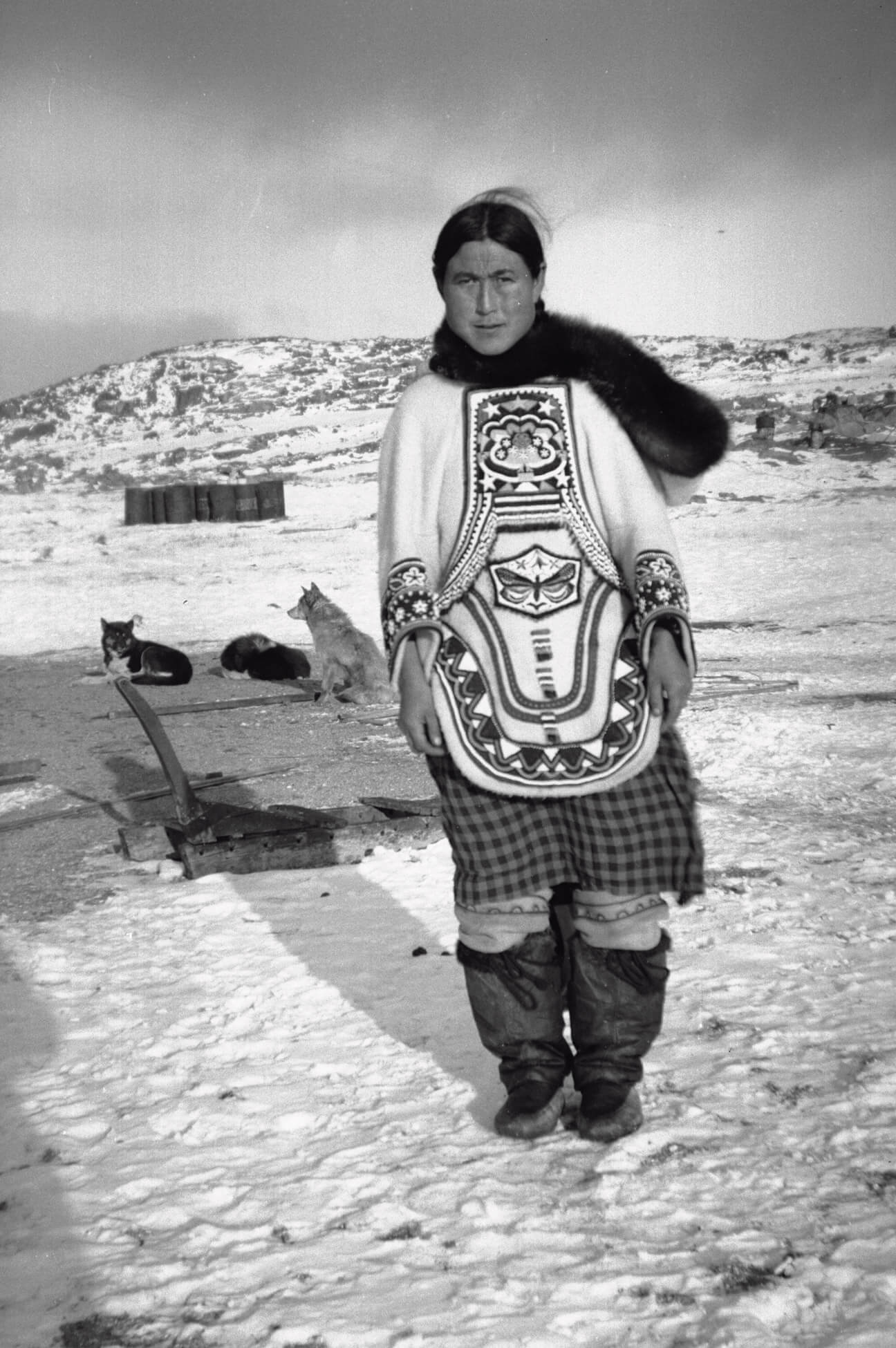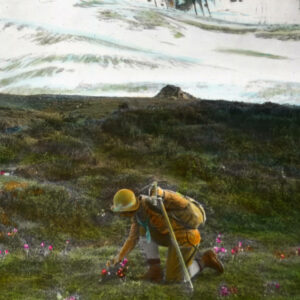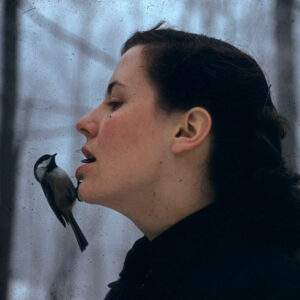Peter Pitseolak (1902, Tujakjuak/Nottingham Island, Nunavut–1973, Kinngait/Cape Dorset, Nunavut)

Aggeok Pitseolak wearing a beaded amauti, c.1940–60
Black and white negative, 5.7 cm x 8.9 cm
Canadian Museum of History, Gatineau
When Peter Pitseolak (1902–1973) began taking photographs in the early 1940s, he wanted to capture people of his community in and around Kinngait (Cape Dorset, in what is now called Nunavut) going about their daily lives, and in this portrait he has depicted his wife, Aggeok. She poses on the tundra with dogs and various pieces of equipment behind her, dressed in a combination of intricately decorated traditional clothing and imported checkered fabric. With its personal subject and interesting juxtapositions, the image is typical of Pitseolak’s body of work. Pitseolak was the first to photograph traditional life in the Arctic from an Inuit perspective.
-
Peter Pitseolak, Ashevak Ezekiel and Kooyoo Pitseolak leaving on the dog sled, c.1940–60
Black and white negative, 6.4 x 8.9 cm
Canadian Museum of History, Gatineau
-
Peter Pitseolak, Aggeok Pitseolak, Ashevak, Johnniebo and an Inuit woman dragging a dead seal, c.1940–60
Black and white negative, 6.4 x 8.9 cm
Canadian Museum of History, Gatineau
-
Peter Pitseolak, Distant view of Cape Dorset, c.1942–43
Black and white negative, 6.4 x 8.9 cm
Canadian Museum of History, Gatineau
Active in the 1940s and 1950s, Pitseolak used borrowed cameras and taught himself photography before acquiring his first camera. In his later life he pointed to a meeting with American photographer and filmmaker Robert Flaherty (1884–1951) as triggering his interest in photography. By his own account, Pitseolak wanted to document traditional Inuit culture in a period of immense change and government incursion, so he took photographs on hunting expeditions and around the traditional camps. Sometimes he posed the action or asked sitters to wear particular garments as part of an informed process of documentation by a photographer who was also a member of the community. He often used his photographs as references for his creative work as a carver, printmaker, and painter.
One of Pitseolak’s key challenges was that cameras and photographic materials were not designed for Arctic conditions. In collaboration with Aggeok, he developed film and prints in huts and igloos, working to moderate fluctuations in temperature, and made adjustments to his cameras to mitigate the glare of snow. After Pitseolak contracted tuberculosis in 1945, his poor health prompted a shift toward more intimate indoor portraits of family and friends.
Pitseolak’s work was not exhibited until after his death. Following a show devoted to his photographs at the McCord Museum in Montreal in 1975, organizers developed a travelling exhibition for the North with small prints mounted on folding boards that could be loaded into small planes.

 About the Authors
About the Authors
 More Online Art Books
More Online Art Books
 Acknowledgements
Acknowledgements